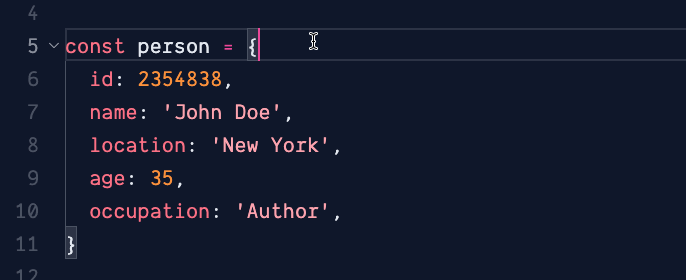Prefer Alphabetized Object Keys
When it’s been a while since I’ve written a post and I need to get back at it, I like to pick something I can write really quickly and publish right away. So here’s one of the quickest tips I have for you: whenever order is not important, prefer to alphabetize the keys of your objects.
As a dev, you spend a lot of time reading code. Anything we can do to increase the speed and efficiency of reading and scanning the code can have a big return on investment in the long run. Alphabetizing the keys of your objects is one of the simplest and easiest ways you can do this.
This shouldn’t really be controversial, especially for developers with any knowledge of algorithms and data structures. What’s the fastest way to search through an array? Have it pre-sorted. That’s what alphabetizing does. It’s a default sort for every object in your codebase.
But it’s more than scanning, it also speeds up writing. If you always alphabetize your keys, you never have to ask yourself, “Where should I add this?” You pick a name, and you slot it in. You keep the keys sorted.
Now, imagine you’ve done this for an entire codebase. Every prop, every object type, interface, map, and dictionary is alphabetically sorted. Because of this order, you save a second or two every time you have to look for a key. You do this multiple times a day, you do this for a full year. It sounds silly, but you might have saved a few hours over the course of a year.
What about logical groupings?
There’s a reason I use the word “prefer” in the title of these posts. There may be a time where the order of keys matters, or putting them in a “logical” grouping might be better. If that is the case, I like to indicate that with a comment and possibly some whitespace.
// WARNING: ORDER HERE MATTERS!
const obj = {
foo: 1,
bar: 2,
baz: 3,
}
// Or
const styles = {
backgroundColor: 'papayawhip',
color: 'black',
fontSize: '1em',
// Positioning
position: 'absolute',
top: 0,
left: 0,
}The point is, exceptions can be made, but they should be exceptions.
How do I make this easy to do?
There are ESLint rules you can use to enforce and fix this, but I’ve never been on a team that used it, and I’m not sure this is a hill I’d care to die on either. Instead, I just alphabetize keys as I do my work with a simple key combination.
Now, if you use VSCode, I think it might have a default sorting key combo, but I have mine bound to cmd + shift + a (a is for “alphabetize”). Like so:
{
"key": "cmd+shift+a",
"command": "editor.action.sortLinesAscending"
}All I have to do is highlight a group of key/value pairs, hit the key combo, and it’s done.

Wrap up
I don’t think is a life-altering tip. If you never alphabetize an object in your life, you’ll be fine. But for me, it saves a good amount of time and energy reading and writing code.
We don’t talk a lot about code style guidelines these days. Not since Prettier came on to the scene. In general, that’s a good thing, but having some small rules & principles like this one, even if they’re only for you with no real impact to others, can make your code more consistent, and consistency leads to speed over time.

